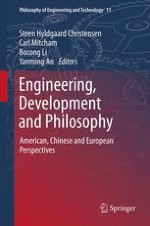2012 | OriginalPaper | Buchkapitel
3. Traditional Chinese Thinking and Its Influence on Modern Engineering and Social Development
verfasst von : Qian Wang, Ph.D., Qin Zhu, Ph.D.
Erschienen in: Engineering, Development and Philosophy
Verlag: Springer Netherlands
Aktivieren Sie unsere intelligente Suche, um passende Fachinhalte oder Patente zu finden.
Wählen Sie Textabschnitte aus um mit Künstlicher Intelligenz passenden Patente zu finden. powered by
Markieren Sie Textabschnitte, um KI-gestützt weitere passende Inhalte zu finden. powered by
